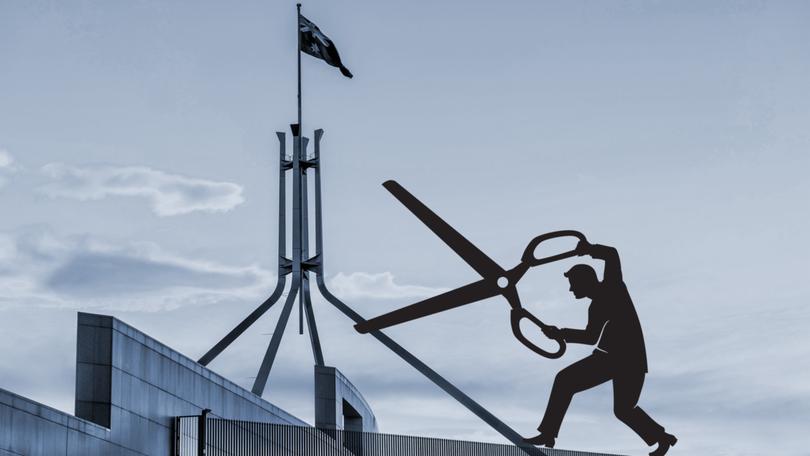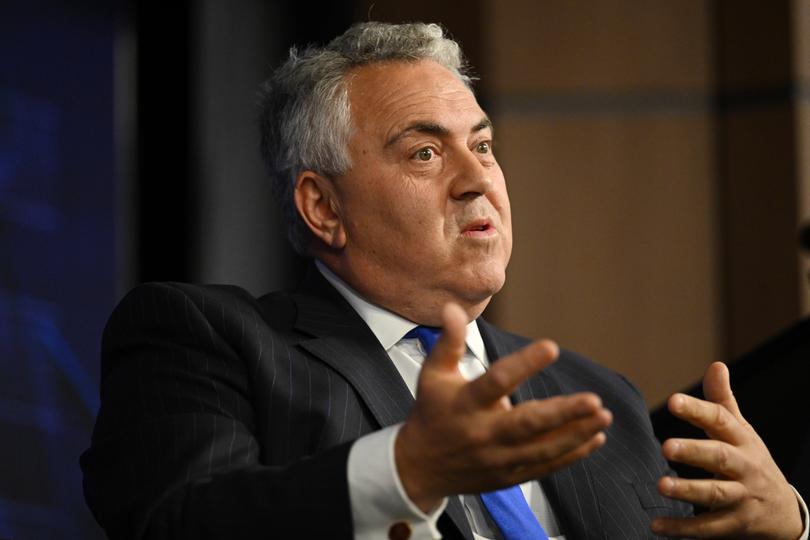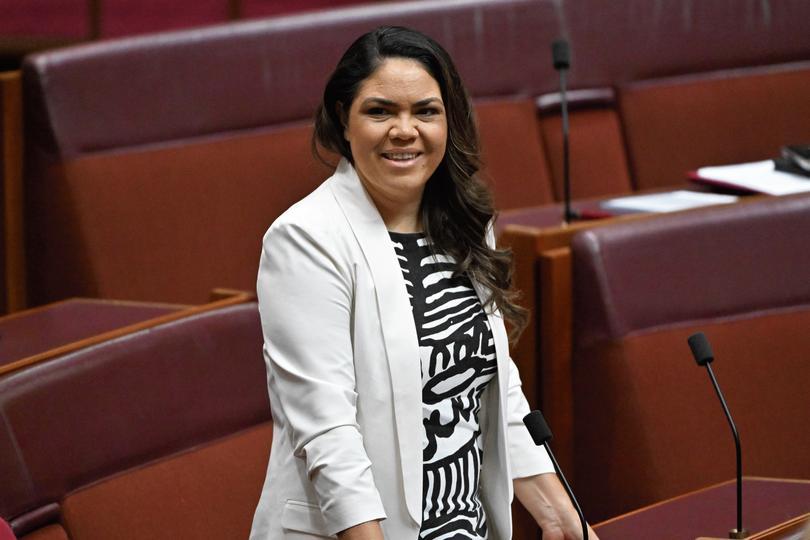JACKSON HEWETT: Why cutting Australian spending would be so DOGE-gone difficult

Elon Musk may be sleeping in the Executive Office, firing off threatening emails in a bid to get Government employees to self-immolate, but such “theatrics” won’t work here, according to Saul Eslake, the highly respected economist who led Jeff Kennett’s Commission of Audit that resulted in sweeping reforms and debt reduction in Victoria.
Mr Eslake said unlike Mr Musk’s “smash and grab” approach, real reform needs to happen with a root and branch review of government services and hard choices on where to cut. At a Federal level that job gets even harder, given the main role of the Commonwealth is to effectively collect taxes and redistribute most of it to citizens, either directly, or via the states.
He has no truck with a DOGE concept in Australia.
Sign up to The Nightly's newsletters.
Get the first look at the digital newspaper, curated daily stories and breaking headlines delivered to your inbox.
By continuing you agree to our Terms and Privacy Policy.“What Musk is doing is theatre, and it’s either not going to happen, or if it does happen, it’s going to produce a violent political backlash against Trump,” Mr Eslake said.
“We don’t need it, and I think it’s incredibly irresponsible of Dutton to say we’re going to cut government spending but we won’t tell you where until after the election. I wouldn’t buy that.”
Opposition parties regularly go to the ballot promising spending cuts but quickly discover the electorate has other ideas.
That was the case for the Abbott government, who found that the steep austerity program authored by former Business Council of Australia chair, Tony Shepherd, blew up in their face.
That 2014 budget, described by then Treasurer Joe Hockey as designed for a nation of “lifters, not leaners’” sought $30 billion in savings by changing the indexation and eligibility age of the aged pension, introducing Medicare co-payments and cutting Family Tax Benefits. With 86 changes in total, the budget proposals quickly lost traction in the Party room and in Parliament.

Eighteen months later, both Mr Abbott and Mr Hockey were out of office.
Mr Eslake said the reason why such austerity programs are so difficult to implement is because almost every cut is a reduction in someone’s valued service.
“The public, very evidently, wants more spending on health care, aged care and disability care. Partly, that is the inevitable result of the population ageing,” he said.
“There are more old folks in the electorate, they want more spent on them, and woe betide any government that says we’re not going to do it.”
On top of the demographic drain on the budget, both parties have committed to $750b in defence spending over the coming decade, while interest payments for “$580b of debt since the GFC” must be met.
All told, Mr Eslake said, that extra spending has raised the proportion of government spending to GDP by two per cent over the long-run average, and he poured cold water on the Coalition plan to find savings by slashing the public service.
“Public Service wages and salaries are about 5 per cent of what the Federal Government spends,” he said. “There’s not a lot of upside from sacking public servants in Canberra, as the Morrison government found. They sacked public servants and replaced them with more expensive consultants.”
True reform would have to come from a bipartisan approach to spending, something highly unlikely amid fractious debate over the costings of subsidised staff lunches, and talks of cuts to “ideologically driven” programs by shadow government efficiency minister Jacinta Price.
“Cuts in federal government spending would basically be cutting cash payments to some combination of individuals, pensioners, people on the National Disability Insurance Scheme, veterans, healthcare benefits, and the Pharmaceutical Benefits Scheme, and cutting payments to state governments for front-line services,” Mr Eslake said.
“With a couple of exceptions, I would genuinely struggle to find savings in other areas of government spending of 2 per cent of GDP. Or if I could find them, I would have trouble explaining how the government that implemented them would expect to get re-elected.”

A DOGE by any other name
A master marketer who has built iconic companies like Tesla and SpaceX, Mr Musk knows something about branding.
But behind the DOGE is a very familiar concept.
“It’s austerity by disguise,” said Benjamin Leruth, Senior Lecturer in Public Policy at the University of Melbourne.
Mr Leruth, who co-authored a book on the implementation of austerity programs across Europe, said that one of the consequences of slashing government programs was increased polarisation between left and right, as well as between urban and rural areas.
“It realigned the political landscape across different countries, because there were people who were comfortable with austerity measures and adopted a sentiment of reluctant individualism. Others believed they were the losers of austerity measures, and that led mostly to the radical left wing that explained the rise of people like Jeremy Corbyn,” he said. Mr Leruth said rural voters in Europe viewed the reduction in services through a prism of being left behind to benefit corporations and traditional “mainstream establishment”.

“People in the regions feel feel that their voices have not been heard. We saw it in France. It also explains why we have a very strong right wing populist government in power now in the Netherlands,” he said.
Some economists argue that despite their popularity, austerity programs haven’t worked, pointing to the continuing weak growth in Europe.
French and US researchers found that had ten European nations including France, Germany and the Netherlands not experienced austerity shocks, aggregate output would have been roughly equal to its pre-crisis level, rather than showing a 3 per cent loss. For so-called GIIPs (Greece, Ireland, Italy, Portugal, and Spain) austerity programs pushed output nearly 18 per cent below trend, compared to 1 per cent otherwise.
Revenue reform
In the absence of a bipartisan program to get spending under control, Mr Eslake said there would need to be a better way to collect revenue.
The choices here are equally hard.
One would be to broaden the base of the GST. Another would be to reform the tax concessions wealthier Australians receive, including capital gains discounting for investment and the 15 per cent tax on super contributions, which equate to about $40bn over the forward estimates. Mr Eslake also believes the Petroleum Resource Rent Tax “ought to be collecting a lot more revenue than it is”.
He also said that Australia is an outlier in not collecting inheritance tax, something “neither ‘Saint’ Margaret Thatcher nor ‘Saint’ Ronald Reagan saw fit to abolish them when they could have”.
“Adam Smith and Milton Friedman were both advocates of inheritance taxes,” Mr Eslake said of the estimated $3.5 trillion that would be passed down from baby boomers “not to people in their twenties and thirties who are struggling to buy homes, but to people who are in their fifties”.
He also questioned the idea of cutting the corporate tax rate, saying that any reduction would benefit foreign investors in Australian companies at the expense of Australian investors’ franking credits.
Red tape
Higher corporate taxes are an anathema to the Business Council of Australia, which has called for a tax-to-GDP ratio cap of 24 per cent and more transparency around off-budget expenditure.
But they are equally worried about red tape, calling for Productivity Commission reviews of incoming legislation to analyse its impact on business and a dedicated Minister for Deregulation at the cabinet level.
“You want that particular task to be right at the heart of the government’s thinking each and every day, and you want that to be their specific responsibility,” BCA chief Bran Black told The Nightly.
Bruce Billson, a former Liberal minister and now chair of the Small and Family Business Ombudsman, agreed that red tape was an increasing dampener on enterprise.
“In the last full year of accounting information that’s available, 46 per cent of small businesses did not make a profit and they’re hearing strong compliance-orientated messages by regulators and the tax office,” he said.
“It displaces effort when small family businesses could be creating new value. They’re sitting there terrified that they might have a regulatory misstep.”
Mr Billson said he was inundated with examples of regulations that limited business activity, including a proposed extension of the food labelling laws that would require restaurants to change their menus if their supplier sent them fish from a different country of origin.
It is a classic case of lobbyist overreaching.
“I love the seafood industry, they’re world class, but to track where anchovies come from on Joe’s pizza?”
“That is using regulation to advantage one sector, the fish industry, by imposing a regulatory burden on another sector.”

